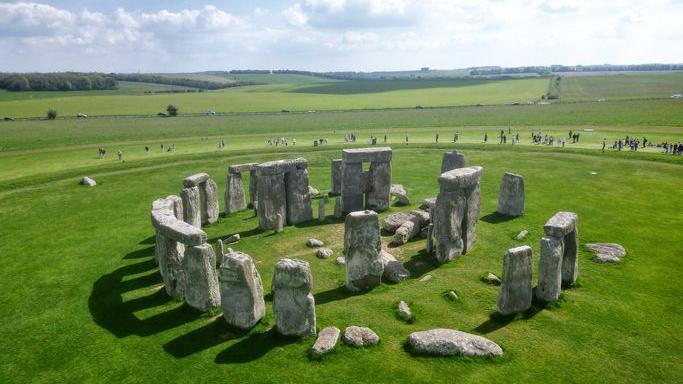How an old cow tooth helped scientists unravel Stonehenge mystery

- Published
It's one of the world's greatest monuments and greatest mysteries; how and why did the famous stones of Stonehenge end up in south-west England?
However, scientists say an unlikely object might help them moo-ve an udder step closer to solving the puzzle.
They've taken a closer look at a cow's tooth, which was previously found close to Stonehenge's south entrance.
Experts now believe the cow originated from Wales and could have played an important role in transporting the stones across the UK.
More like this
- Published4 days ago
- Published16 August
- Published14 July
What did experts find at Stonehenge?

More than one hundred years ago, in 1924, archaeologists discovered an ancient cow's jawbone that had been carefully placed next to Stonehenge's south entrance.
Experts dated the find to the monument's very beginning, around 3000BC - however the strange discovery has puzzled historians ever since.
A team of researchers from the British Geological Survey, Cardiff University and University College London decided to take a closer look at one of the teeth from the ancient jawbone.
They wanted to understand why it had been placed there and why was the cow considered special?
Scientists carried out tests on the tooth to find out what it was made of, which offered clues about the cow's diet, environment and movement.
They discovered data which suggests that the cow originated from Wales, before moving to Stonehenge.
Experts say this is the first time that they have seen evidence linking cattle from Stonehenge to Wales - and it supports the theory that the animals were used in the transportation of the enormous rocks across the country.
What is Stonehenge?
Watch: What is the story behind Stonehenge?
Stonehenge is one of the world's most famous monuments.
It stands on Salisbury Plain in Wiltshire, in south-west England, and its giant stones can be seen from miles around.
Stonehenge took many hundreds of years to build, and work is believed to have began around 3000 BC, in the late Neolithic Age.
Over the next thousand years, people changed parts of the monument. The last changes were made in the early Bronze Age, around 1500 BC.
We may never know exactly why Stonehenge was built, but it's widely believed that people gathered there for religious ceremonies.
